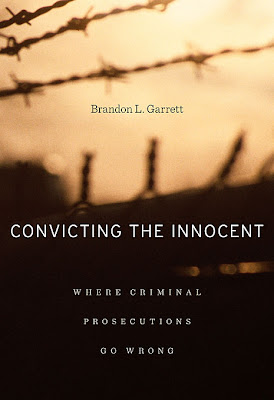You've heard of people who were shown by DNA evidence to be innocent of the crimes they were imprisoned for. How can that happen? What can we learn from it?
Prof. Brandon Garrett (with the help of a team of research assistants) found out all he could about the first 250 DNA exonerations, gathering trial transcripts (when available), news coverage, appellate records, and the records from state post-conviction proceedings and federal habeas cases. Then he mined the data: How many of the exonerated people had confessed falsely? How many had been mistakenly identified by one or more eyewitnesses? How many were prosecuted with questionable forensic evidence (hair analysis, for instance, does not prove much of anything)? How many years did it take from initial conviction to eventual exoneration?
He presents the results in Convicting the Innocent: Where Criminal Prosecutions Go Wrong (KF9756 .G37 2011 at Classified Stacks). The results are disturbing—but can also be instructive.
Thursday, April 4, 2013
Convicting the Innocent
Posted by
Mary Whisner
at
12:11 PM
at
PERMALINK
Labels:
Books,
Studies and Scholarship,
Video and Film
2
comments


Subscribe to:
Posts (Atom)

